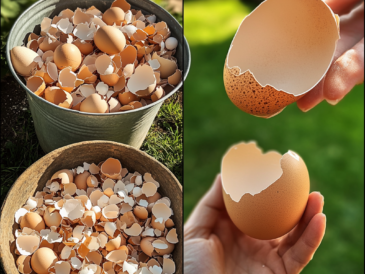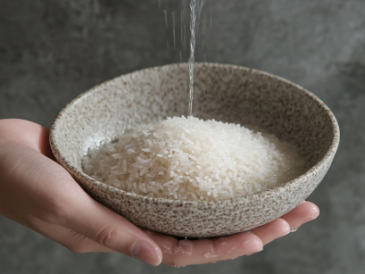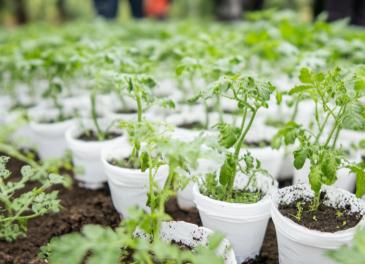Hydrangeas are a gardener’s favorite for their lush, colorful blooms that can transform any landscape. However, getting hydrangeas to reach their fullest potential can be a bit challenging. If you want to enjoy fuller, more vibrant hydrangeas year after year, there’s a simple gardener’s trick that can make a huge difference.
This guide will walk you through the steps to ensure your hydrangeas thrive, from pruning and watering to understanding their soil needs and getting the right amount of sunlight.
Understanding Hydrangea Growth 🌿
Before diving into the trick, it’s crucial to understand how hydrangeas grow. Different varieties of hydrangeas bloom on old wood, new wood, or a combination of both. This growth pattern determines when and how to prune, as well as the type of care needed to encourage fuller blooms.
- Old Wood Bloomers: These hydrangeas produce blooms on stems that have grown the previous year. Common types include Bigleaf (Hydrangea macrophylla) and Oakleaf (Hydrangea quercifolia).
- New Wood Bloomers: These bloom on the current year’s growth, such as Panicle (Hydrangea paniculata) and Smooth Hydrangea (Hydrangea arborescens).
The Gardener’s Trick: Pruning for Fuller Blooms ✂️
One of the most effective ways to encourage fuller hydrangea blooms is through proper pruning. Here’s a step-by-step guide on how to prune based on your hydrangea type:
1. Identify the Hydrangea Variety
- Bigleaf and Oakleaf (Old Wood Bloomers): Prune these after they finish blooming in late summer or early fall. Be careful not to prune too late, as it could cut off next year’s buds.
- Panicle and Smooth Hydrangea (New Wood Bloomers): Prune these varieties in late winter or early spring, just before new growth starts. Cut the stems back by about one-third for fuller blooms.
2. Prune at the Right Time
- Old Wood Bloomers: Prune immediately after flowering to prevent cutting off the buds that will bloom next year.
- New Wood Bloomers: Prune in early spring to remove weak or dead stems and encourage strong new growth.
3. Shape the Plant
- Cut at a 45-degree angle just above a healthy pair of buds to promote fuller growth.
- Remove dead or weak stems to improve air circulation and allow more sunlight to reach the plant.
4. Don’t Over-Prune
- Over-pruning can reduce the number of blooms, so remove only what’s necessary to shape the plant and keep it healthy.
Soil and Water: The Foundation for Healthy Blooms 🌱💧
Hydrangeas need specific soil and water conditions to thrive.
Soil Quality
- Rich, well-draining soil is essential for healthy blooms. Hydrangeas prefer slightly acidic to neutral soil (pH 5.5 to 7). Consider testing your soil to adjust pH levels as needed.
Consistent Watering
- Hydrangeas require consistent moisture, especially during dry spells. Deep watering at the base of the plant helps promote deep root growth and prevents mildew from forming on the leaves.
Mulching
- Apply a 2-3 inch layer of mulch around the base to retain moisture, regulate temperature, and suppress weeds. Organic mulch, like bark or wood chips, will also break down over time and add nutrients to the soil.
Fertilization: Feeding Your Hydrangeas 🌸
To encourage large, vibrant blooms, proper fertilization is key.
Balanced Fertilizer
- Use a balanced, slow-release fertilizer (10-10-10) in early spring when new growth begins. Avoid over-fertilizing, as this can result in lush leaves but fewer flowers.
Color Adjustment
- For blue or pink hydrangeas, soil pH can influence bloom color. Use aluminum sulfate to encourage blue blooms and garden lime to make them pink. Apply these treatments carefully, following the instructions to avoid damaging the plants.
Light and Location: Getting the Right Amount of Sun ☀️
Hydrangeas thrive when they receive the right balance of sunlight and shade.
Morning Sun, Afternoon Shade
- Place your hydrangeas where they’ll get morning sun and afternoon shade. Too much direct sun can scorch the leaves and reduce bloom size, while too little sun can result in weak growth.
Proper Spacing
- Ensure your hydrangeas have enough space to grow, as proper air circulation is essential for preventing diseases like powdery mildew.
Regular Maintenance: Year-Round Hydrangea Care 🛠️
Deadheading
- Regularly remove spent blooms to encourage the plant to focus its energy on developing new flowers. This keeps the plant looking neat and promotes continuous blooming.
Pest and Disease Control
- Keep an eye out for pests such as aphids and spider mites. Use organic methods to manage infestations and check for signs of diseases like mildew or leaf spot.
Winter Protection
- In colder climates, protect your hydrangeas from freezing temperatures by mulching heavily around the base. For old wood bloomers, consider wrapping them with burlap to protect the buds that will form next year’s flowers.
Conclusion: Enjoy Fuller, Healthier Hydrangeas 🌷
By mastering the art of proper pruning, providing the right care in terms of soil, water, and light, and performing regular maintenance, you can enjoy fuller, more vibrant hydrangeas that will continue to flourish year after year. Hydrangeas can be the show-stoppers of your garden, providing color, beauty, and a stunning focal point throughout the growing season.
With a little extra attention, your hydrangeas will reward you with spectacular blooms that will make your garden the envy of the neighborhood. 🌸🌿




